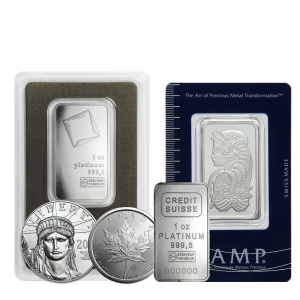In a world of rising geopolitical tensions and relentless digital transformation, the foundations of financial security are being tested. Serbia’s decisive move to repatriate its gold reserves, alongside a global trend of nations reclaiming their bullion, signals a return to tangible wealth. Meanwhile, the Bank for International Settlements (BIS) is pushing for a tokenized financial system, raising alarms about the risks of Central Bank Digital Currencies (CBDCs). Against this backdrop, physical precious metals like gold and silver stand as unyielding pillars of stability and privacy.
Serbia’s Gold Repatriation: A Strategic Move for Sovereignty
The National Bank of Serbia has announced plans to repatriate its entire gold reserve, valued at approximately $6 billion, to domestic vaults. With 50.5 tonnes of gold – 86% already stored in Belgrade and the remaining 5 tonnes in Switzerland – Serbia is poised to become the first Southeastern European nation to hold all its bullion domestically. Initiated in 2021 and spurred by the 2022 freezing of Russia’s foreign exchange reserves, this move highlights the risks of storing assets abroad. Since 2019, Serbia has bolstered its gold reserves by purchasing 17 tonnes internationally and acquiring 19 tonnes from Zijin Mining’s local operations, reinforcing its commitment to financial sovereignty. As a note, since 2019, Serbia’s gold reserve has risen by nearly 250%!
Serbia’s strategy mirrors a global shift. The World Gold Council reported that in 2024, 59% of central banks stored some gold domestically, up from 41% the prior year (2023), with 7% planning further repatriation in 2025. Showing more evidence that nations are not only beginning to prioritize the ownership of precious metals, but also keeping their reserves within their own borders. Nations like Germany, pressured by populist demands for local storage, and Hungary, with 86% of its gold held domestically, as well as Italy calling for repatriation reflect this trend. These actions underscore a growing distrust in foreign-held assets and affirm gold’s role as a hedge against systemic risks.
BIS and the Tokenized Future: A Dangerous Digital Path
The Bank for International Settlements (BIS) is aggressively steering the financial system toward a tokenized future, where digital assets and Central Bank Digital Currencies (CBDCs) dominate. Through projects like Aurum and Promissa, BIS advisors are exploring tokenized promissory notes to digitize cross-border payments. Initiatives like Hertha, partnered with the Bank of England, claim to address financial crime while preserving privacy, but these assurances ring hollow. The push for CBDCs threatens to erode personal freedom and destabilize economies in ways that cannot be ignored.
CBDCs, controlled by central banks, are marketed as tools for efficiency, but their risks are profound. These digital currencies enable sweeping surveillance, with every transaction recorded in centralized databases that are prime targets for cyberattacks and government overreach. The International Monetary Fund’s (IMF) CBDC Virtual Handbook warns that poorly designed CBDCs could shatter trust, undermine privacy, and destabilize financial systems. Unlike cash, which preserves anonymity, CBDCs create a digital trail that exposes every financial move to an overseer. The BIS’s tokenized vision prioritizes centralized control over individual autonomy, offering little benefit compared to the existential threats it poses.
In this precarious shift toward a digital economy, physical precious metals like gold and silver stand as unrivaled safeguards. Their tangible nature makes them immune to cyber threats, political manipulation, and the volatility of digital systems. In 2024, gold accumulation by central banks accounted for over 20% of total global demand. Unlike CBDCs, which rely on vulnerable digital infrastructure, physical gold and silver hold intrinsic worth that no authority can dilute. Not to mention, silver would play an incredibly large role in these systems from an industrial standpoint as it is the best conductor of electricity. Something these systems will rely heavily on. This means that not only will silver’s price benefit from it providing value to the system, but its scarcity will also only continue to grow immeasurably as it is used for infrastructure creation and/or repairs in addition to its record number of uses now.
Some propose gold-backed digital assets as a bridge between physical and digital wealth, but these carry risks absent in physical bullion. During the 2008 Great Financial Crisis, central banks flooded markets with liquidity to keep markets from completely nose-diving. However, they devalued fiat currencies and destabilized financial systems in the process. Digital assets tied to gold or silver, even if backed, can be minted at will by central banks or issuers seeking liquidity, mirroring the volatility of fiat systems in which currency can be created in the trillions with the click of a button. Owning physical precious metals eliminates this risk. Gold and silver in your possession cannot be manipulated or devalued by distant authorities. They offer unmatched financial privacy and stability, shielding against inflation, currency devaluation, and systemic collapse. Serbia’s repatriation drive proves this: nations and individuals who hold physical assets secure their wealth and autonomy. Owning physical gold and silver is not just a hedge—it’s a direct claim to enduring value in a world increasingly at the mercy of digital control.
The global financial landscape is at a tipping point. Serbia’s gold repatriation, alongside similar moves worldwide, signals a return to tangible wealth amid distrust in global systems. The BIS’s push for a digital, tokenized economy, led by CBDCs, threatens privacy and stability with risks that far outweigh their benefits. Physical precious metals offer a proven defense, grounding wealth in reality and empowering citizens to protect their financial freedom. The facts are undeniable: in an era of digital uncertainty, owning physical gold and silver is your strongest shield. Secure your wealth today by choosing the enduring power of precious metals.

 Hi,
Hi,












